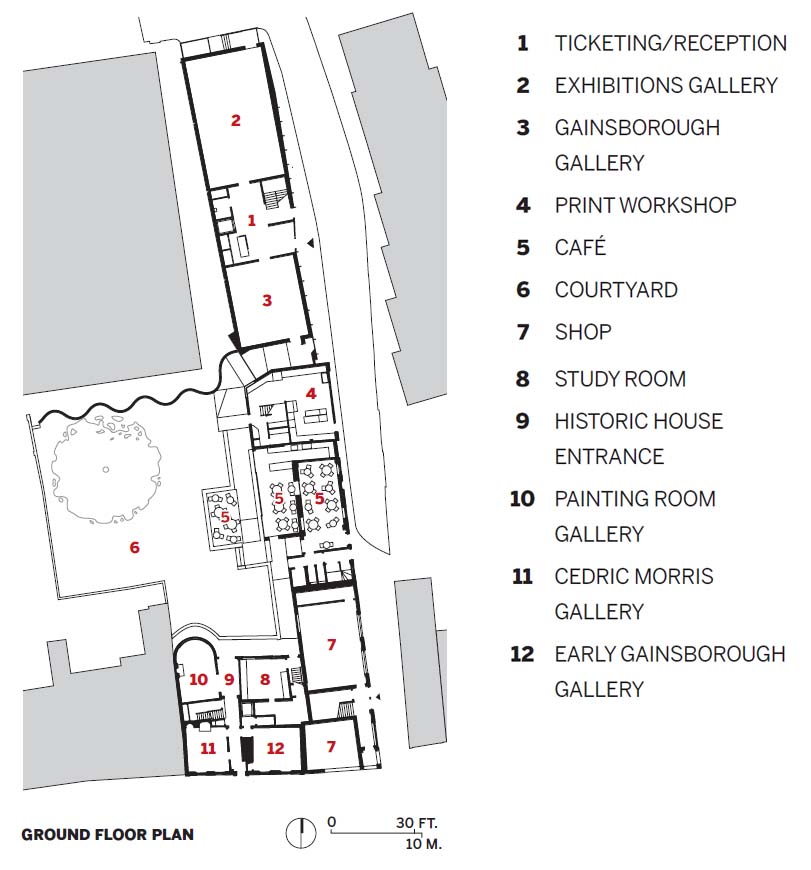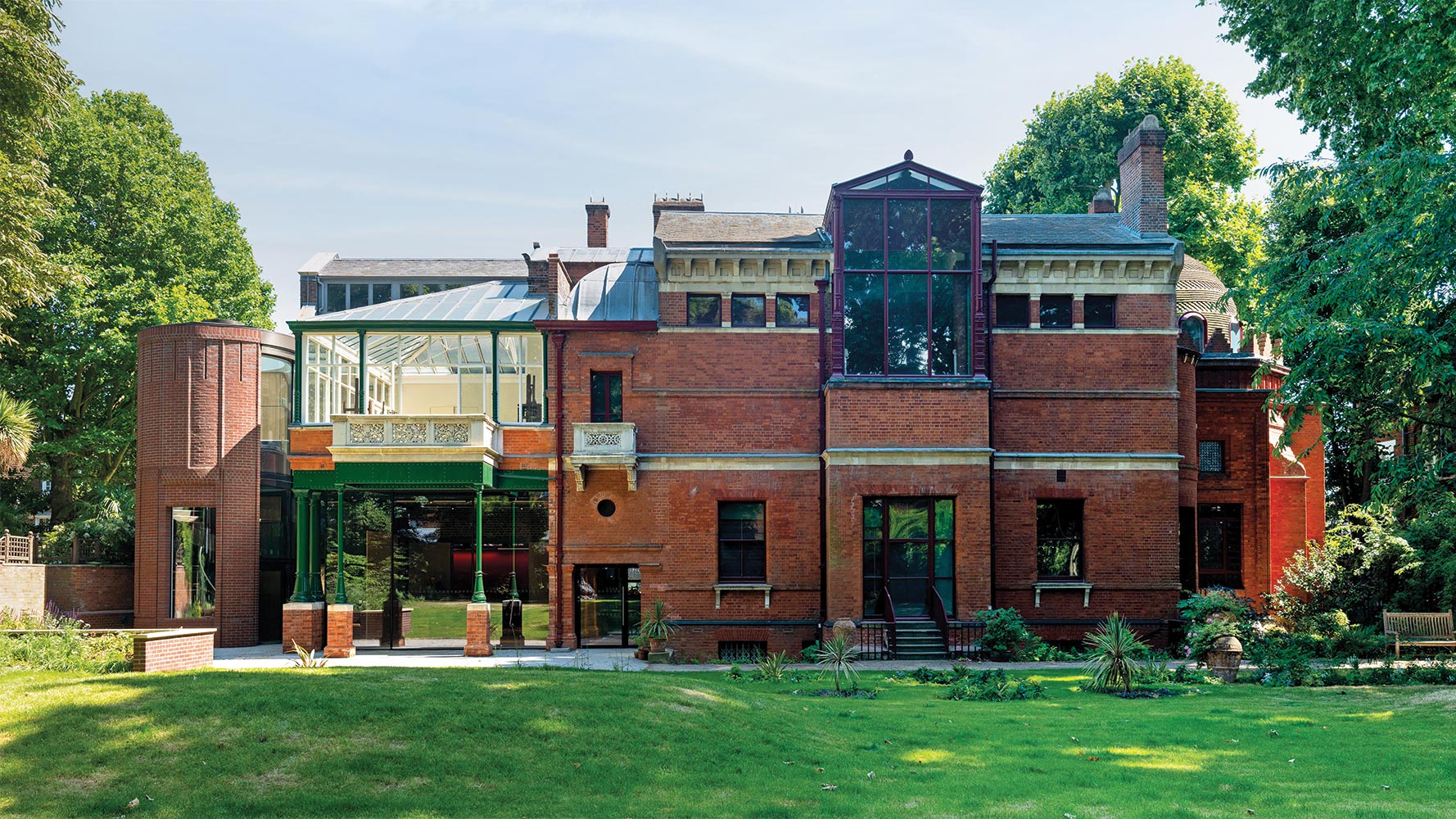The homes of famous artists make for very particular—and, in the right hands—very special museums. Supposedly domestic worlds, they have been built or adapted by their creative residents, within their lifetimes, to simultaneously display art and artifacts. Leighton House and Gainsborough’s House are such places: homes reflecting artistic views that have become museums and cherished cultural institutions. Recent extensions and renovations to these two complexes show how architects can provide curators with a museum that offers an intimate, novel experience of art to the public, an art integrated with life rather than serving abstract ideas. While architects in Europe are expected, increasingly, to resist demolition and incorporate pre-existing buildings into any new piece of architecture, the work on these small buildings constitutes essays—aesthetically sophisticated ones, given the artistic nature of the original structures—on how architecture must now be conceived.
The transformation of both Leighton House in London and Gainsborough’s House in Sudbury, 70 miles northwest of the capital, has required the removal or adaptation of 20th-century additions. In the case of Leighton House, a series of store rooms that had been created within a 1920s Arts & Crafts extension called the Perrin Wing, had to be removed, enabling a new café to occupy the central space on the ground floor, with windows added to the rear. At Gainsborough’s House, it was an adjacent 1930s government building that went, allowing the institution to stretch to the east.
The new-build elements of Leighton House and Gainsborough’s House are small. Leighton House has only been expanded some 7,000 square feet, to just under 80,000 square feet. But these modifications are tips to icebergs of institutional reorganization. The most visible component of the renovation work—done by international firm BDP—to Leighton House, one of London’s great hidden architectural treasures, is simply a new entrance, inlaid with a sunburst of black ceramic detailing, inserted into the Perrin Wing. It redirects visitors from the front door, with steps, that Frederic Leighton and his many guests used, to an approach that now meets contemporary standards of accessibility.
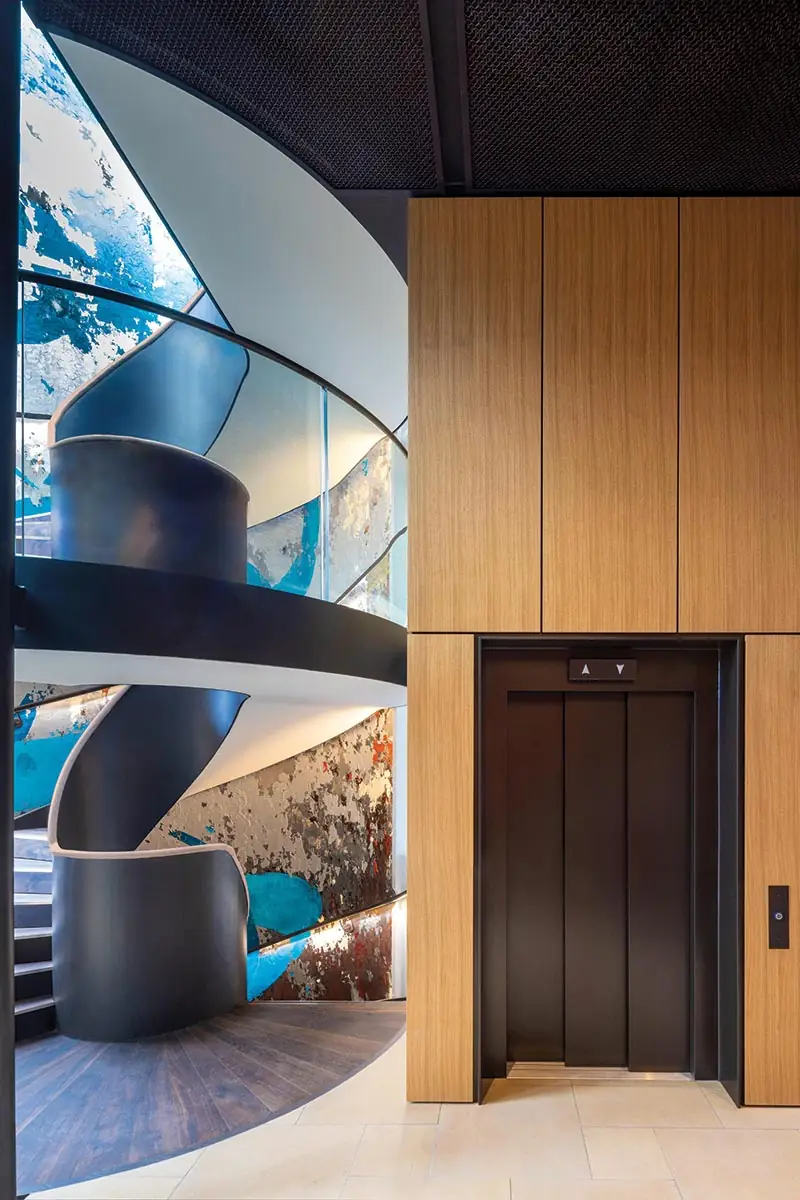
1
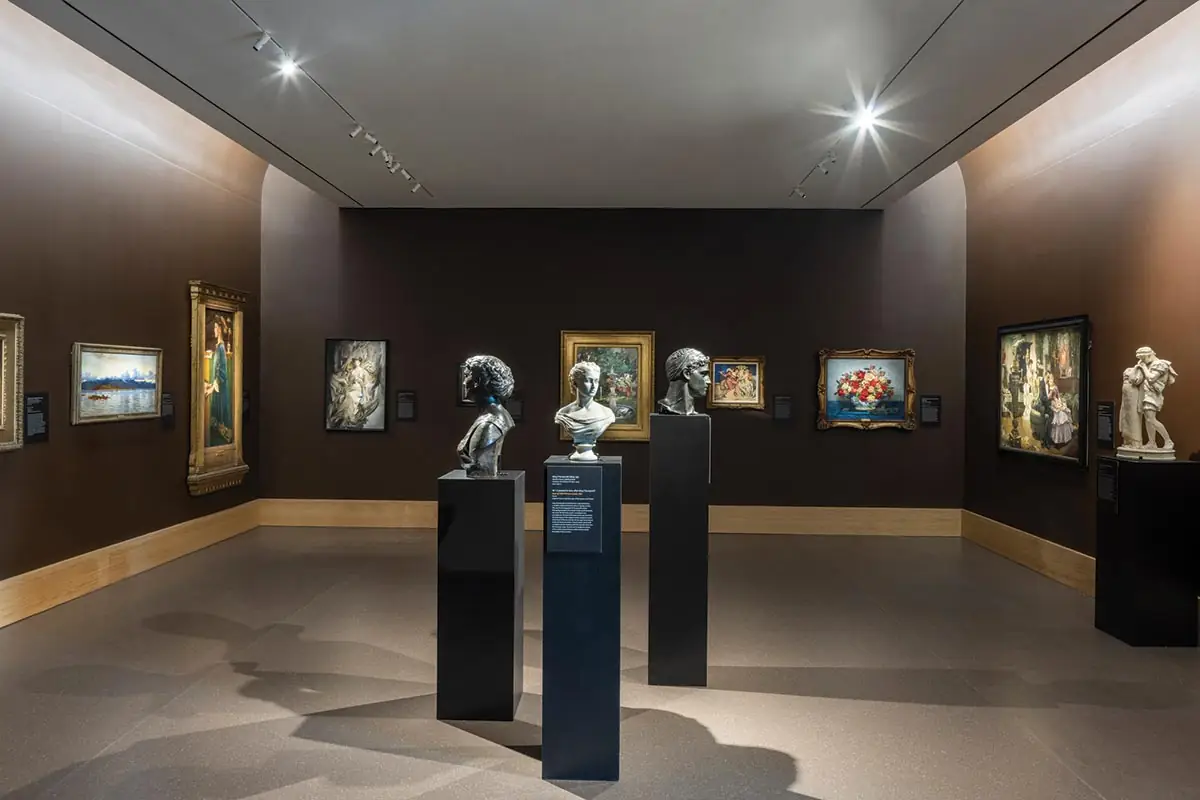
2
A cylindrical brick addition to Leighton House (top of page) contains a helical stair with a handpainted mural inspired by the poet Rumi (1). The renovation allows more room for exhibition (2). Photos © Dirk Lindner, click to enlarge.
Even the largest new component is small. To the rear now is a brick-clad rotunda, 30 feet high and 20 feet at its widest. Containing a staircase and elevator, it nestles into the last unobtrusive exterior space in the large garden, from which the two-story cylinder of circulation can be seen, providing symmetry with the dome of the fabled Arab Hall on the west wing of the building. Hidden within Leighton House, however, BDP—whose heritage projects include current work on the Houses of Parliament—created approximately 2,700 square feet of additional floor space, largely in a newly excavated basement, which provides a new drawing gallery, extra bathrooms, conservation, and teaching rooms.
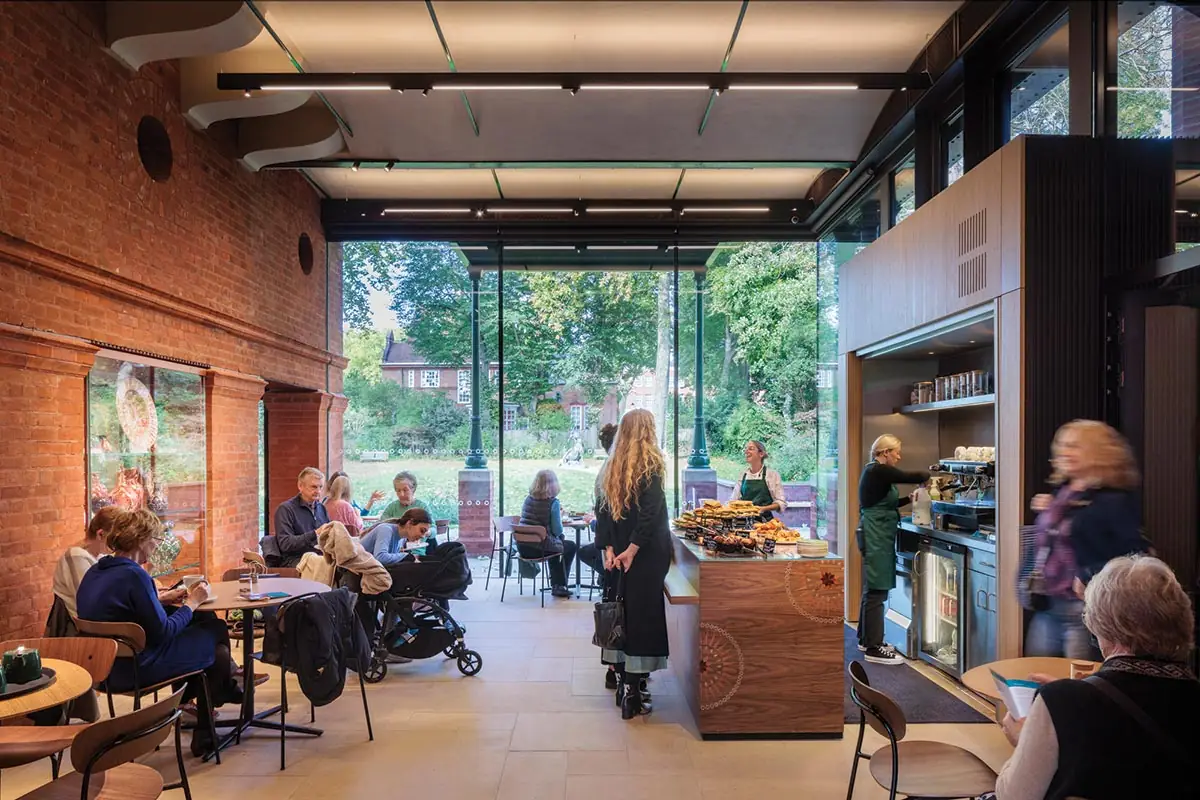
A new café occupies the central space on the ground floor of Leighton House. Photo © Dirk Lindner
It is the latest stage of a steady expansion. Frederic Leighton (born in 1830 into a wealthy family) built his house as an endlessly expanding work of art, made to display his collections, which includes work by his contemporaries as well as an astonishing range of Middle Eastern tiles. In close collaboration with the architect George Aitchison, he created, in stages beginning in the 1860s, what is still a pavilion of Victorian eclecticism. Its rear facade is a particular joy, a collage of wrought-iron balconies and domes, with a north-facing winter garden. Leighton was possibly the most active or powerful president of the Royal Academy in its history, and there is much to be told about Leighton and his milieu; many members of his circle bought houses in the vicinity (as a current exhibition details.)
Click drawing to enlarge.
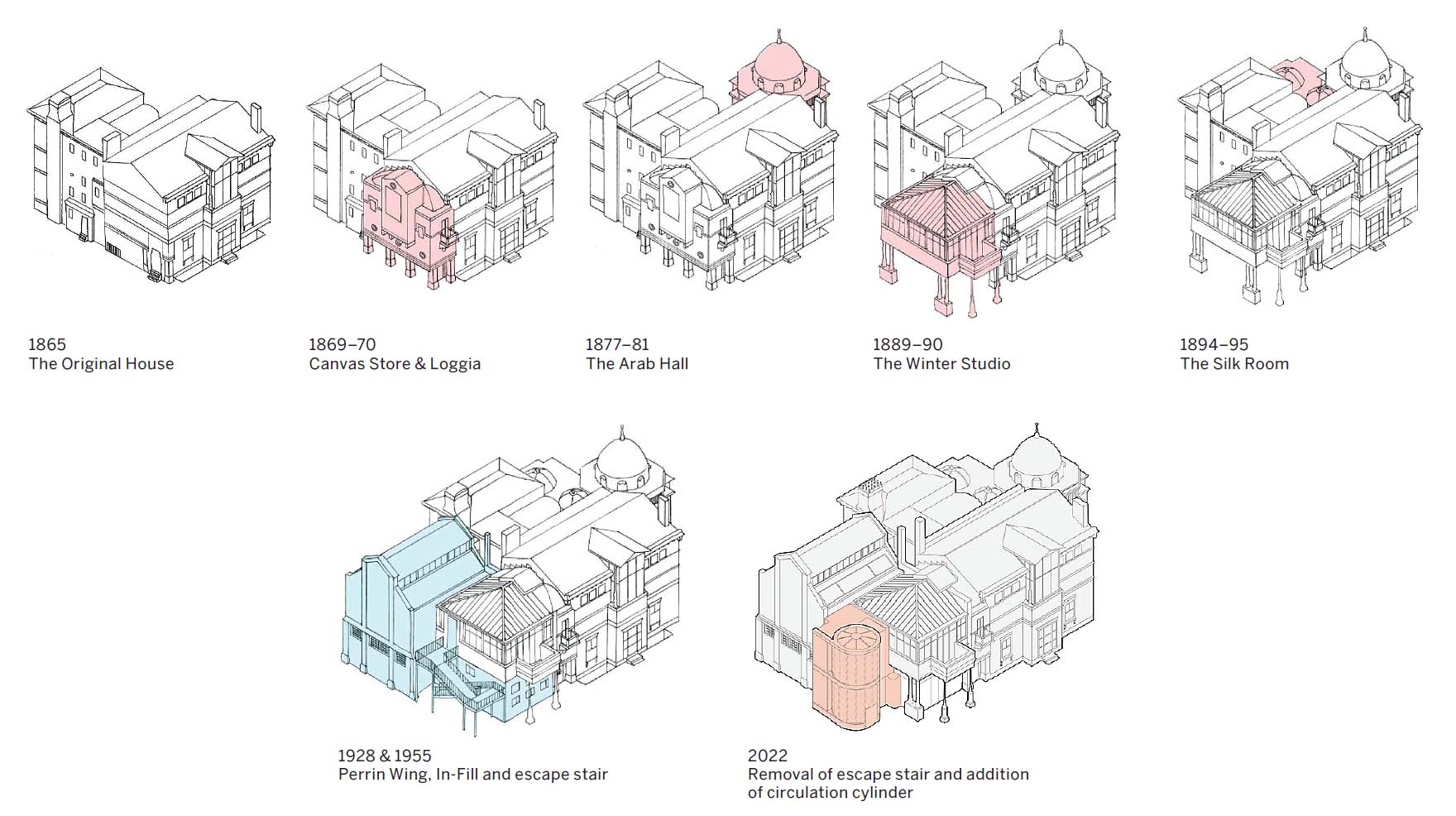
The evolution of Leighton House.
Gainsborough’s House, conversely, is a simple Georgian rowhouse in a cheery Suffolk market town. The relatively modest home in which Thomas Gainsborough was born in 1727 became a museum in 1956, dedicated to his origins—unlike Leighton’s, which conveys the culmination of a major artistic career. The former’s life is discernible only in flashes, as in the long stretch of glazing he added to the north-facing studio, to provide light ample enough for painting his wealthy clients. It has always been a struggle to find space in the narrow building for the much larger paintings that Gainsborough made after moving to London and becaming (arguably) Britain’s greatest-ever portraitist.
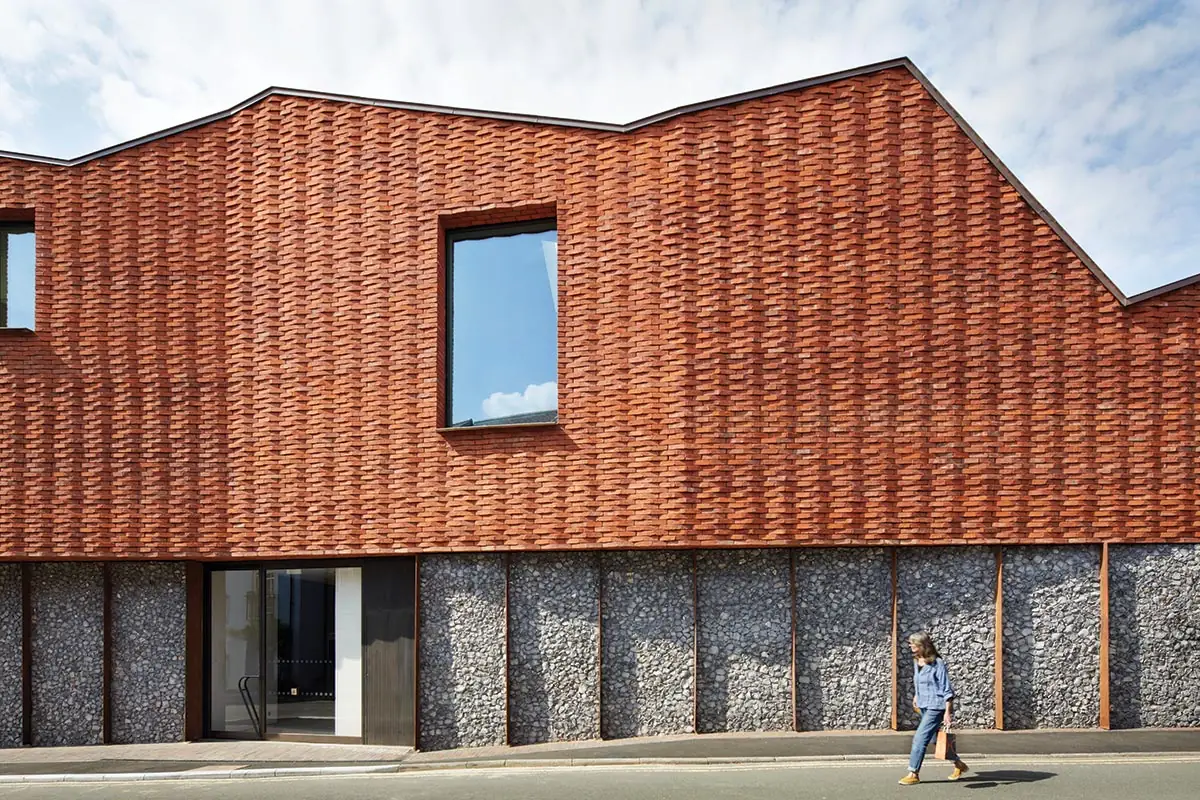
The ground floor of the new structure at Gainsborough’s House is clad in knapped flint and topped by an upper level of local brick. Photo © Hufton+Crow
To do just that, museum specialists ZMMA have built a new three-story gallery building. It sits behind the original house, at the end of a connecting row of three buildings down a side street, which the museum owns and that contain a shop, café, and print studio (refurbished as part of the recent works). The extension primarily allows some of Gainsborough’s more famous works to be properly exhibited in the same vicinity as his earlier ones. The ground floor of the new structure is clad in knapped flint and is drawn back slightly from the street. The protruding upper two stories of the building are clad in red brick, a commitment less to immediate context than to local materials. (The handmade bricks were produced two miles away.)
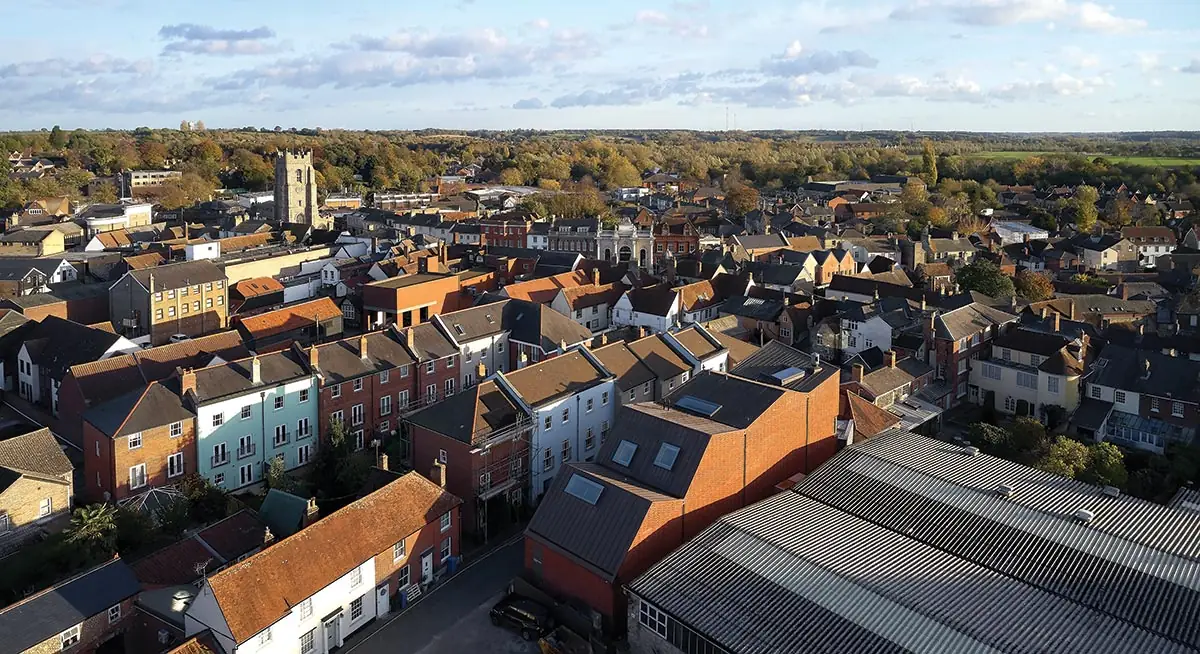
3
Its irregular sawtooth roof stands out amid the Suffolk market-town surroundings (3), and results in striking galleries (4). Photos © Hufton+Crow
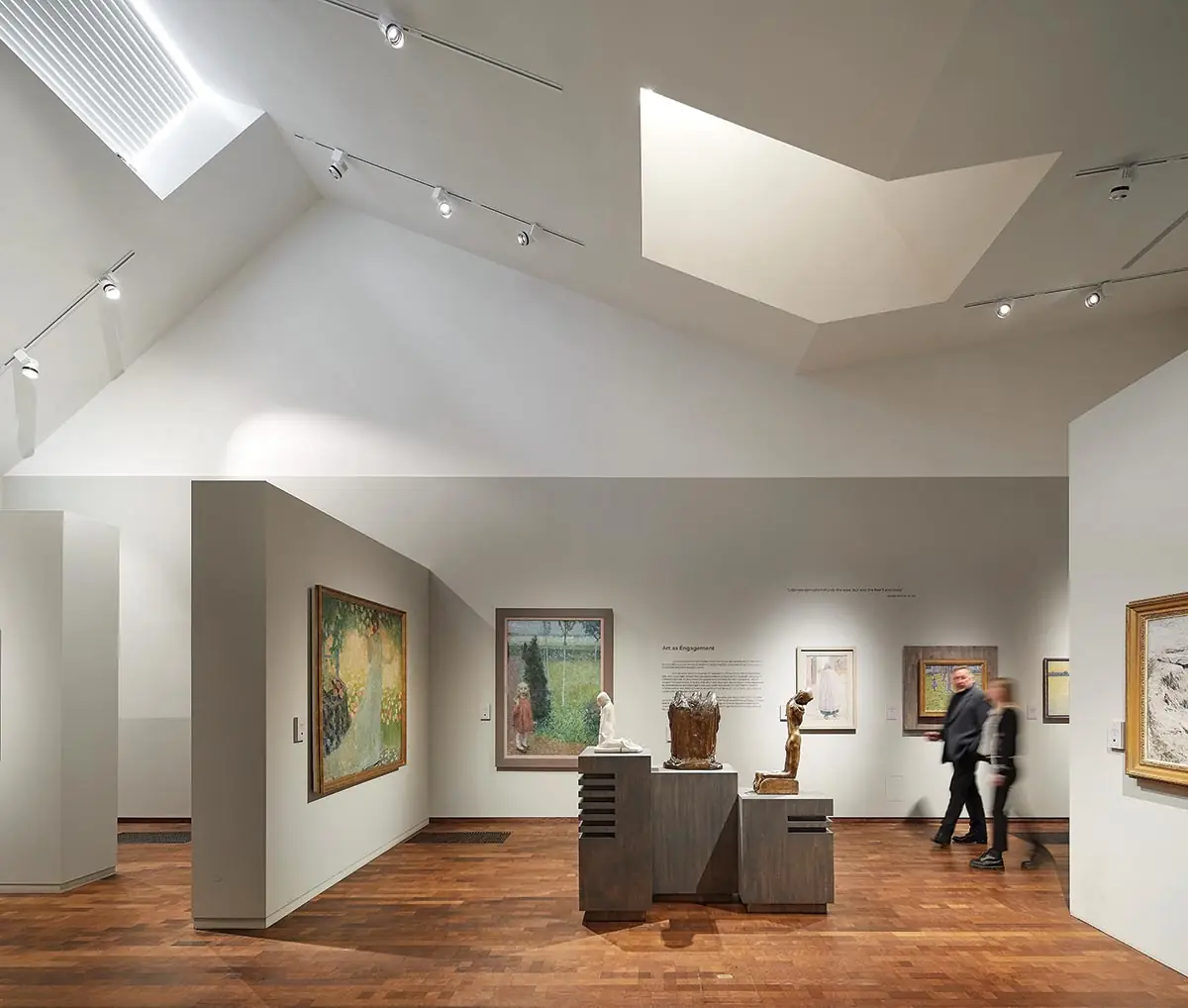
4
Instead of using flint as an inlay to brick as is traditional, the division highlights the scale of the upper floors, and the building looms over the side street somewhat (although the scale does address an old silk factory immediately to the west of the extension; Sudbury is historically the center of Britain’s silk industry). The new build accommodates an additional 3,500 square feet of exhibition space, in four galleries, across three floors. With it, Gainsborough’s House has become a regional art gallery, capable of hosting touring exhibitions and articulating the cultural relationships that the east of England has with the rest of the country and continental Europe.
The new elements are not just about expanding the museum: they also improve access, an ongoing issue with historical buildings. As with Leighton House, the most prominent new component at Gainsborough provides better circulation; to make it wheelchair-accessible, the ancient floorboards had to be dropped and the garden relandscaped. However, “access” can also mean access to art. The new gallery space here has the security and environmental controls that will allow the institution to borrow the best work—as they have done with several of Gainsborough’s finest society portraits, displayed in a stunning room clad in green damask silk, on the ground floor.
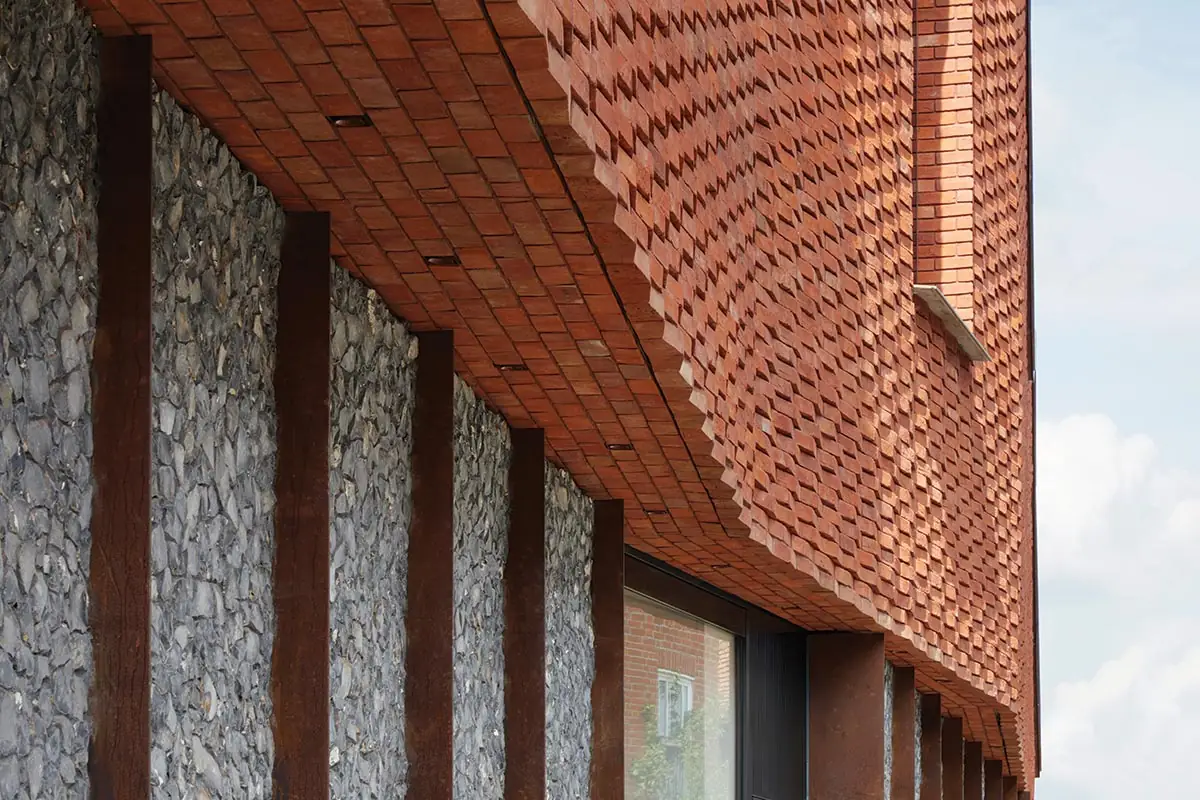
The unusual basketweave pattern of the brick on the Gainsborough’s House addition is visible from street level. Photo © Hufton+Crow
In addition, the extensions have enabled a larger internal reorganization of the respective museums. The curatorial result is that the museums’ famous former inhabitants can be understood within the artistic culture that they worked in while also expanding the repertoire of the museum.
Significantly, both museums have incorporated new gallery space dedicated specifically to drawing, a medium that in our digital age is engaging new audiences, enchanted perhaps by the immediacy of how a simple pencil or charcoal line on a page can conjure up new worlds. In the case of Gainsborough’s House, the gallery has been created on the house’s second floor following the rehang. One of the many charms of Gainsborough’s House is that the old dwelling remains a gallery rather than a simulacrum of a domestic space (whereas Leighton House was always a gallery that one man lived in). One of the eight gallery rooms in the house is currently given over to the work of Cedric Morris, who ran an unlikely art school in the 1930s nearby, through which Lucian Freud passed.
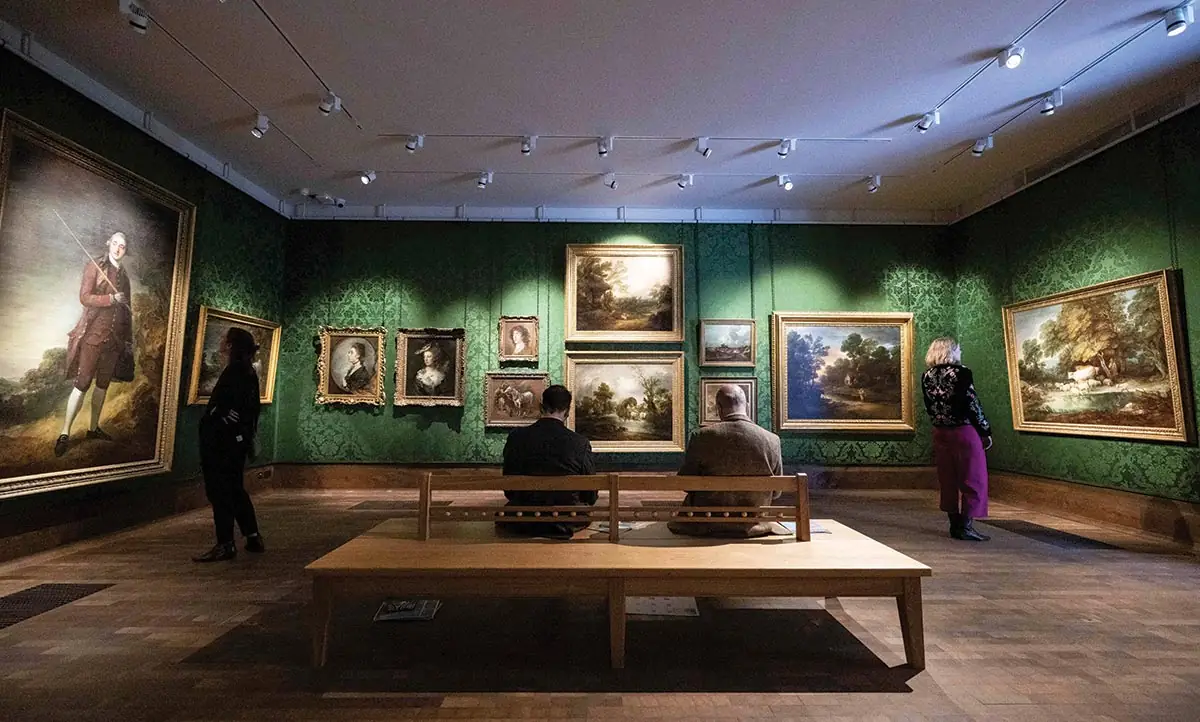
Visitors explore the Gainsborough Gallery Photo © Jeff Spicer
It is an exciting time for preservation in the UK. British practitioners in the field used to treasure the fabric of ancient buildings above all else, after the precepts of William Morris, who valued repair above renovation. For a long time, the British have eschewed the more creative approach of revealing the spirit of the past. And while it is notable that BDP has a high level of in-house technical expertise (in terms of lighting, for example), and ZMMA has a long expertise in dealing with the technical requirements of gallery spaces such as ventilation and natural light, they have each been asked to channel the spirit of the original rather than preserve its fabric literally.
This has matched a new curatorial approach. The two museums are not intended to make the lives of their former owners any more legible as chronological histories or remote historical lives, but to explore how life and art intermingle—how individual artists influence the world around them, and are influenced by it.
Click plan to enlarge
